The purpose of this research study was to discover the behaviors of affluent Americans and their consumption of media, comparing financial and sports media and how they differ through exposure and engagement.
This study was carried out across 72 American panelists drawn from a nationally representative sample – all of which had an annual household income of $100,000 or more. The data that was collected was obtained via the half hourly TouchPoints USA eDiary through the panelists’ mobile devices, across a span of seven days of data capture.
Panelists were asked to report their consumption of sports media, such as sports information or sports events, and also finance media, such as news, banking and investments and their engagement across TV, computer and mobile devices.
Media Consumption: Sports vs. Finance
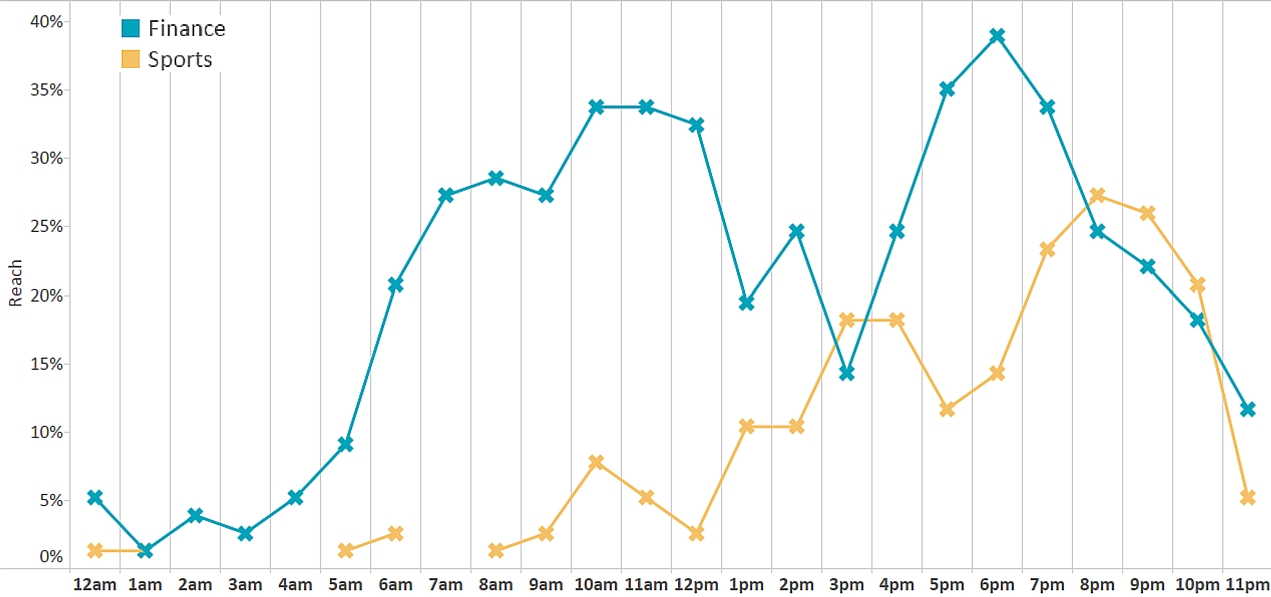
Figure 1: Reach of finance media and sports media by hour of day
As is evident in the data above, sports media consumption doesn’t have much traction with the target demographic during the morning, but starts to gather pace at mid-afternoon – with a peak at 8pm. There are only four hour slots in the day when sports consumption tops finance, with an afternoon peak at 3pm and across the evening times of 8pm-10pm.
The evident early morning peak that occurs in finance media consumption is replaced by a late evening peak for sports media. Panelists remain engaged with finance media right up until 7pm, which is when the main sports media peak begins and overtakes the consumption of finance.
In addition to this evening peak, 3pm sees a rise in sports media consumption and a drop in finance media consumption – this signals a break from work as the affluent forgo finance to engage with sports media. This 3pm dip in financial consumption and rise in sports consumption coincides with a key moment when the number of affluent consumers making purchases overtakes the number considering purchases. However, aside from this 3pm slot, finance media has a far greater reach among the affluent when compared to sports media.
How the Media is Consumed
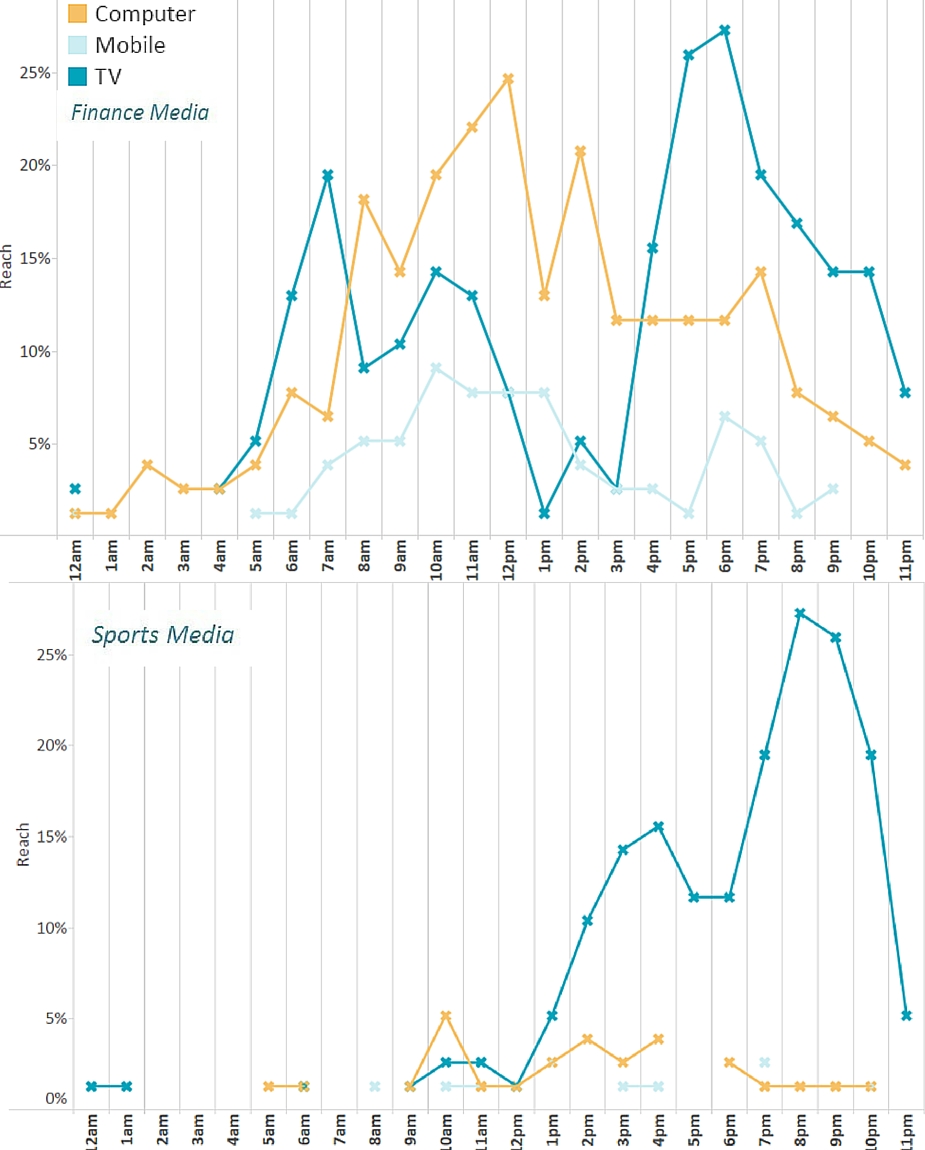
Figure 2: Reach of finance media vs sports media by hour of day and device
The way that panelists engaged with the different forms of media was significant, with TV being by far the preferred device for the affluent consuming sports media, particularly as the day goes on. With sports media – computer and mobile use exceed TV in the morning, perhaps as the affluent catch up on the results of last night’s results. This 10am peak in use would be an optimum time to reach affluent consumers through online sports media.
In contrast, TV is far less dominant in the affluent consumption of finance media – with computer the primary device during working hours. On the other hand, mobile plays a much bigger part in affluent consumers’ consumption of finance media, although it is still a relatively small exposure compared to the other device types used to engage.
When considering TV viewing only, we can see that sports and financial media are similarly engaged with. Affluent viewers are seen to alternate between finance in the morning and early evening, parallel to sports in the afternoon and late evening.
Where the Media is Consumed
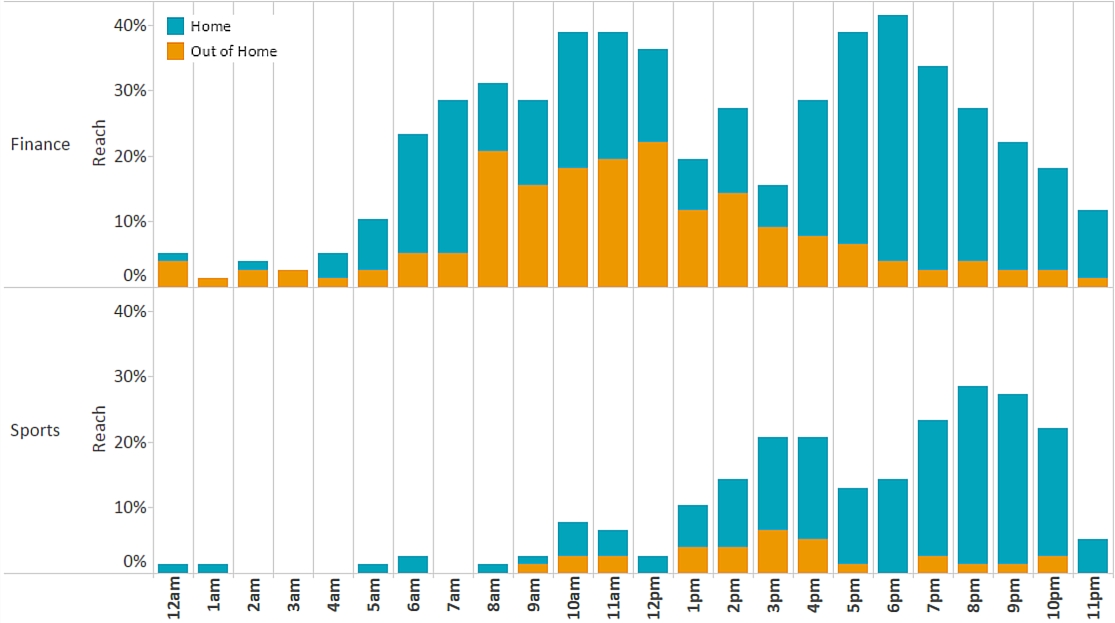
Figure 3: Reach of finance media vs. sports media by hour of day and location (in home or out of home)
The location where the media is being consumed by the panelists helps to identify ways the customer engages with media, such as at home relaxing or at work keeping up to date with relevant news. We can see that sports media is very much consumed at home. We see some out of home use, attributed to the workplace during the day; also in bars during the evening, when people are out watching the games.
Where the Media is Consumed (cont.)
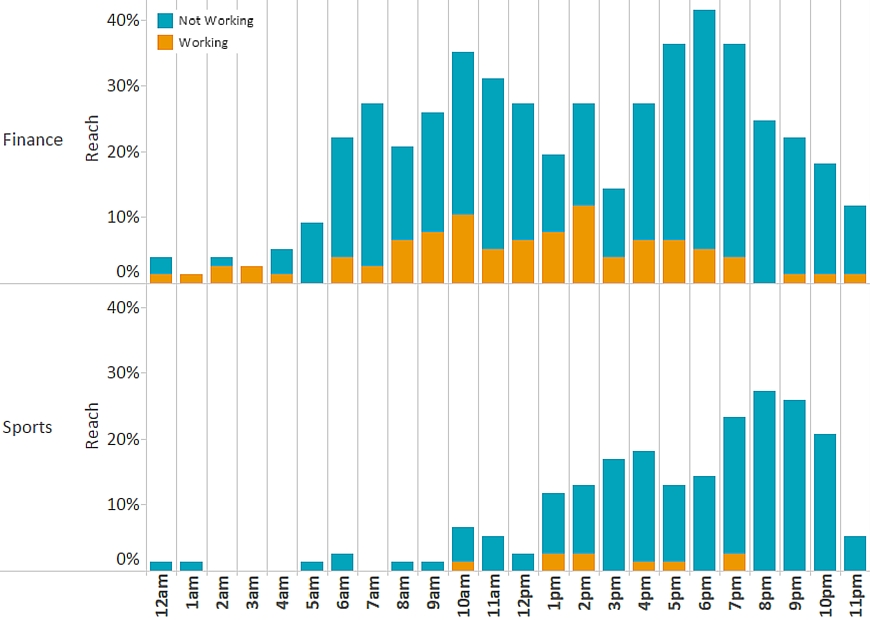
Figure 4: Reach of finance media vs. sports media by hour of day and work activity (working or not working)
On the other hand, a substantial portion of affluent consumers’ consumption of finance media occurs while they are working, it is between 1:30pm and 4pm that finance media consumption has its highest reach among people who are working. However, financial media does translate to the home capacity, displaying a large peak in the early evening, indicating that the affluent will still seek this content when they get home from work.
The location of where the media is being consumed by the panelists helps to identify ways the customer engages with media, such as at home relaxing or at work keeping up to date with relevant news. We can see that sports media is very much consumed at home. We see some out of home use, attributed to the workplace during the day; also in bars during the evening, when people are out watching the games.
In comparison to finance, sports media consumption has minimal reach while the affluent are working, peaking at 3% at 10am between 1:30pm and 2:30pm.
With Whom the Media is Consumed
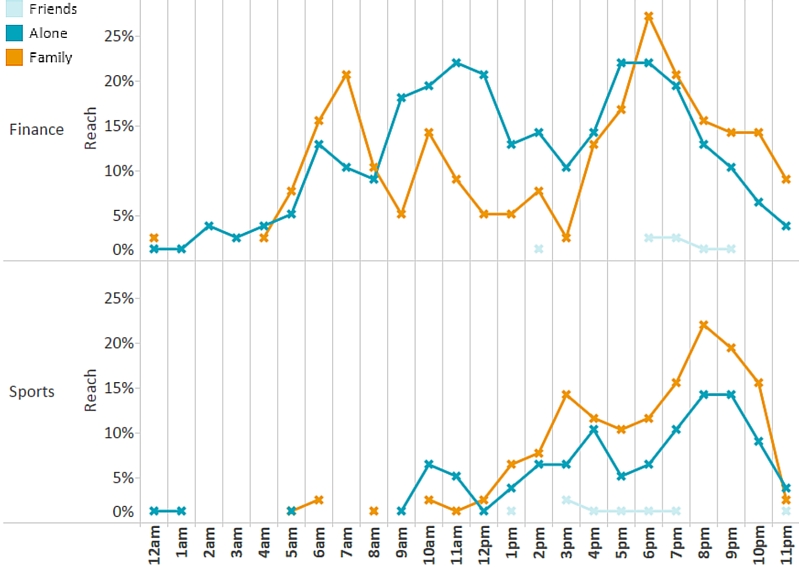
Figure 5: Reach of finance media vs. sports media by hour of day and who respondent was with
The company which the affluent keep when consuming media is significant, it helps create an image of the customer and their ways of engaging with media and why. In consideration, affluent consumers’ consumption of media when in the company of friends is relatively low on both fronts. Affluent consumers’ peak of engagement with financial media when with friends is at 6:30pm with a reach of 3%, with sports media at a similarly low rate of consumption.
For the affluent, their consumption of finance media with family dominates considerably in the early morning between 6am to 8:30am and during peak evening times of 5:30pm to 11:30pm.
Affluent company when consuming either sports of finance media differs significantly. The consumption of sports media occurs primarily in the company of family, which is likely due to the corresponding high proportion of in-home TV viewing. On the other hand, affluent consumers are much more likely to be alone when consuming finance media than when consuming sports media – especially in the evenings.
Purchase Behavior of the Affluent
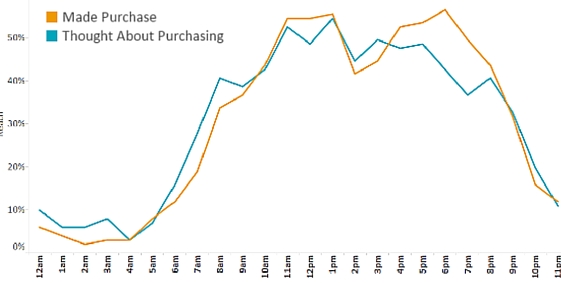
Figure 6: Reach of purchases and purchase thoughts by hour of day
Affluent consumers’ behaviors differ between the balance of purchases that are considered and thought of, against the purchases that are actually made. Until 9am, the affluent make little purchases and are focused more upon considering a purchase. This reverses around lunchtime, but this trend of caution around buying continues in the early afternoon.
This caution drops and purchase action overtakes later in the afternoon and into the evening, before both drop sharply at 9pm. The tipping point from thought to action in purchasing occurs between 3pm and 4pm – the very time in which sports media reach surpasses finance media reach.
Purchase decision times for the affluent also needs to be taken into account. Among all affluent consumers’, planned same-day purchases in the Health and Beauty/Personal grooming category have the shortest time between thought and action.
Purchase Behavior of the Affluent (cont.)
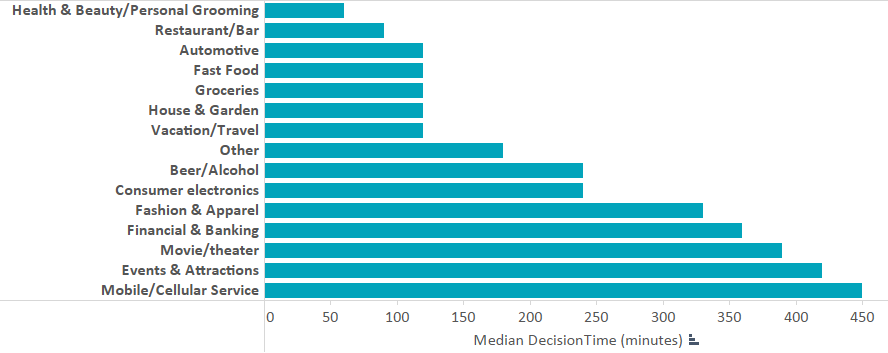
Figure 7: Median decision time between a respondent thinking about a purchase and making a purchase
The behaviors of the affluent after they have been engaging and exposed to the various medias can be significant information for how the media affects the panelists decisions and how it fits into their routine.
After the consumption of both financial and sports media, affluent consumers most commonly find themselves at home, work or in transit.
In terms of activities, more affluent consumers engage in parent and child activities after consuming sports media than after consuming finance media. Conversely, those who consume finance media are more likely to go out to a restaurant or bar than those consuming sports media.
In the case of sports media engagement, these panelists are more likely to visit someone else’s home; they are also more likely to visit a gym or health club than those consuming finance media.
Behavior of the Affluent After Media Exposure
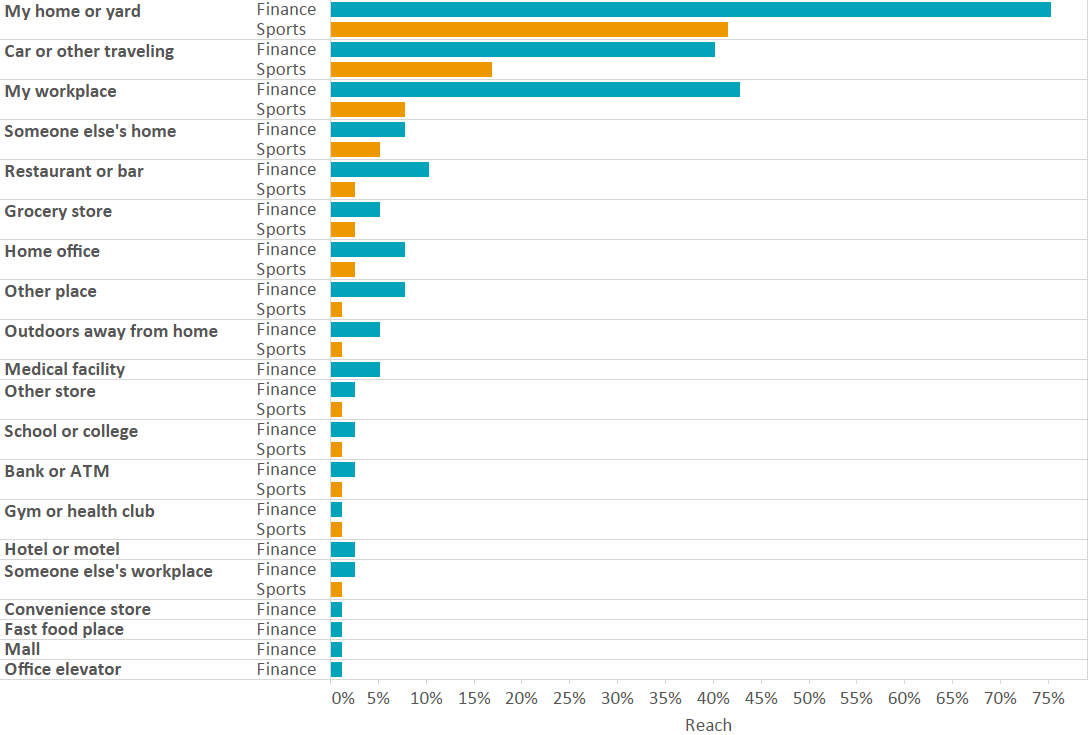
Figure 8: Reach of locations 1 hour after consumption of finance media and sports media
Emotion can be an essential tool when measuring when is best to utilize the engagement of panelists and their emotion to optimize effectiveness of reach.
Our data shows that the affluent tend to be in a more positive mood when consuming both types of media, although sports invoke more positive and strong emotions than finance.
Even at peak times, finance media is consumed with more neutral emotions among the affluent, and doesn’t have the same strong emotional attachment as sports.
Emotions of the Affluent While Engaging
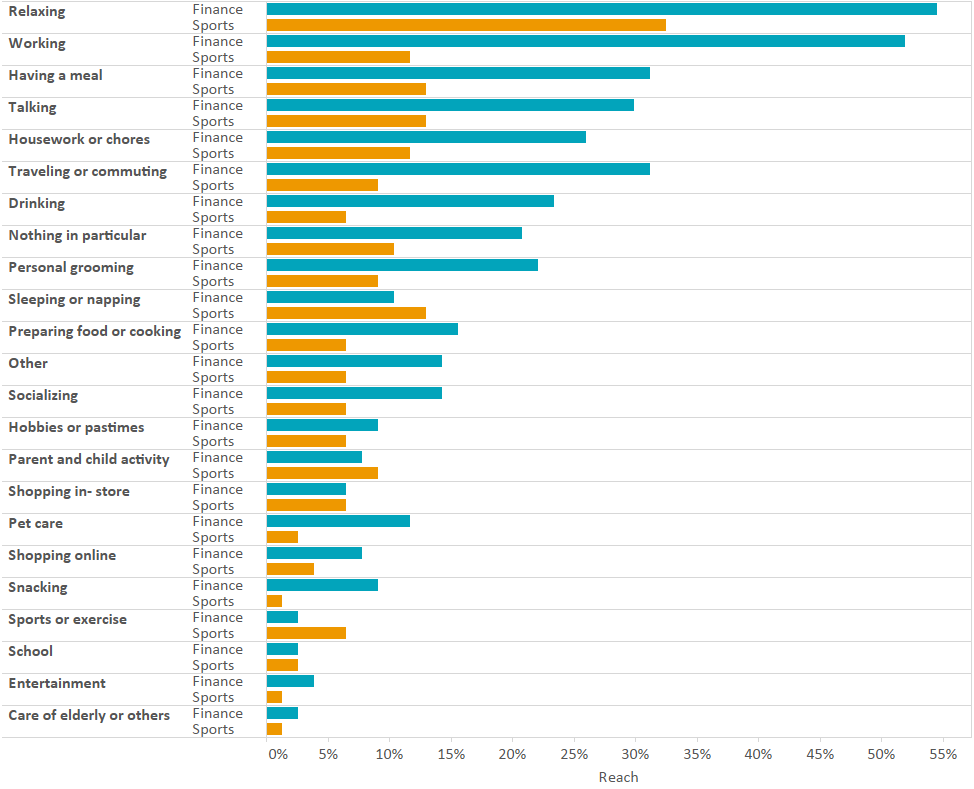
Figure 9: Reach of activities 1 hour after consumption of finance media and sports media
Composition of Finance Media vs. Sports Media
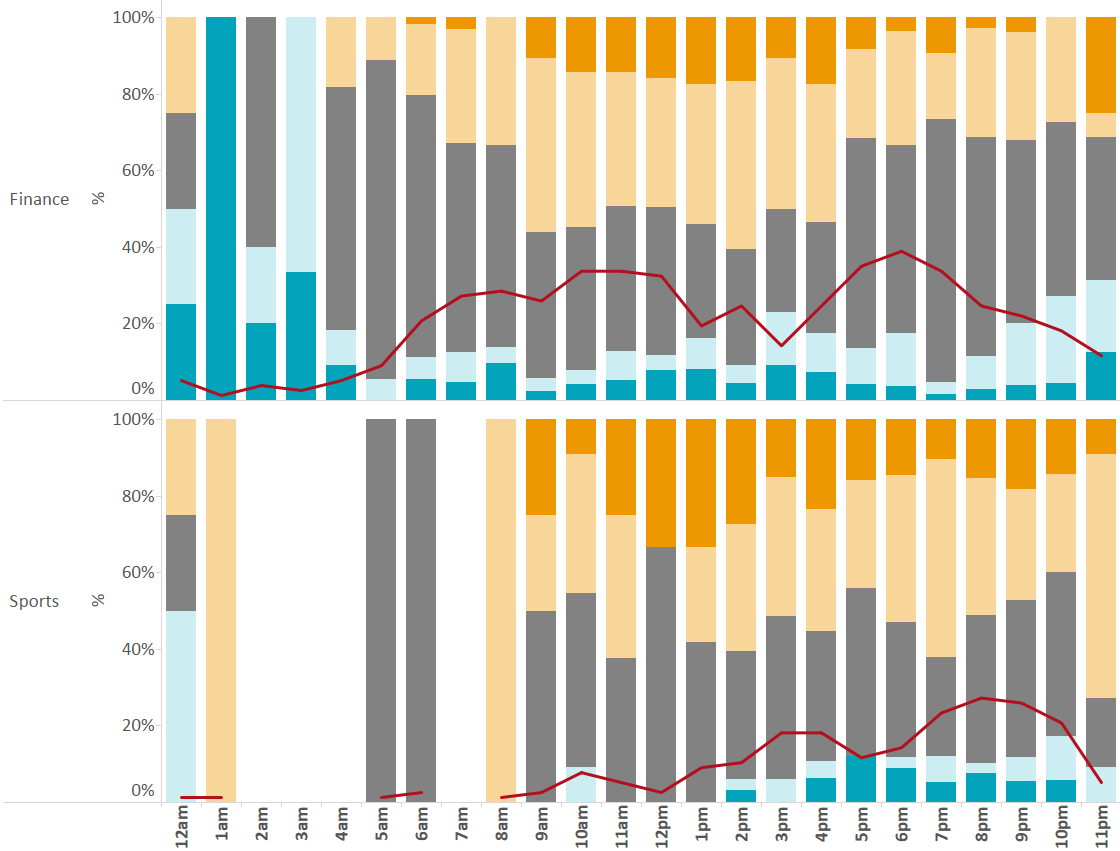
Figure 10: Composition of finance media vs. sports media by hour of day and emotional
Key Insights into Affluent Consumers’ Daily Media Consumption
- Finance media has a much greater overall reach among the affluent than sports media, partially due to the greater reach it has across computer and mobile activity.
- Comparably, TV reach is similar in size between finance and sports media, and their use between panelists alternates throughout the day, ultimately complementing each other with the affluent consuming finance media in the morning and early evening, and sports media in the afternoon and late evening.
- 3pm is a significant time, signalling a break from work while people check out sports media, and also the time of day that affluent consumers shift from thinking about purchases to making purchases. This presents a key opportunity for advertisers to connect with affluent consumers through sports media.
- Connecting with the affluent via digital sports media should happen early in the day – during the morning commute on mobile and around 10am online.
- Among affluent consumers, sports media is consumed in a hotter emotional state than finance media. Positive and strong positive emotions are most common with sports media, while finance media involves more neutral emotions.
- Sports media is generally a family affair among the affluent – and, unlike finance media, family activities continue after media consumption is over.


